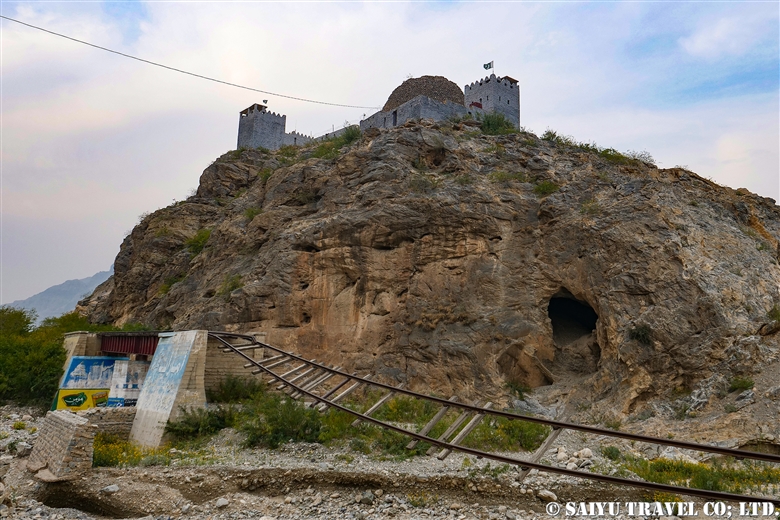Michni Fort, a historic military stronghold nestled amidst the picturesque hills of the Khyber Agency in Pakistan’s Khyber Pakhtunkhwa province, holds a significant place in the region’s storied past. Situated atop a rocky outcrop overlooking the vast expanse of the Bara Valley, Michni Fort stands as a testament to the strategic importance of the Khyber region and the resilience of its people.
The origins of Michni Fort are believed to date back to the 19th century during the British colonial era in South Asia. As part of their efforts to consolidate control over the northwest frontier, the British constructed a network of forts and military outposts to secure key routes and suppress local resistance. Michni Fort, strategically positioned along the historic Khyber Pass, served as a vital link in this chain of defenses.
Constructed atop a rugged hilltop, Michni Fort commanded sweeping views of the surrounding landscape, providing an ideal vantage point for monitoring and controlling movement through the Khyber Pass. Its sturdy walls, bastions, and watchtowers were designed to withstand attacks from hostile forces while serving as a base for British troops tasked with maintaining law and order in the region.
Throughout its history, Michni Fort witnessed numerous conflicts and battles as rival powers vied for control of the Khyber Pass. The strategic location of the fort made it a coveted prize for tribesmen, Afghan forces, and other adversaries seeking to challenge British authority in the region. Despite facing frequent attacks and sieges, the British maintained their hold over Michni Fort, bolstering its defenses and reinforcing its garrison to repel any threats.
One of the most notable episodes in Michni Fort’s history occurred during the Anglo-Afghan Wars of the 19th century. The fort played a crucial role in securing the British Empire’s strategic interests in Afghanistan and beyond, serving as a staging ground for military expeditions and a symbol of British power in the region. The rugged terrain and harsh climate posed significant challenges to the British troops stationed at Michni Fort, yet they persevered, maintaining their presence in the face of adversity.
In the decades following Pakistan’s independence in 1947, Michni Fort continued to serve as a military outpost, albeit with reduced strategic significance. With the advent of modern warfare and changes in geopolitical dynamics, the fort’s role gradually diminished, and it eventually fell into a state of disrepair.
Today, Michni Fort stands as a silent witness to the region’s turbulent past, its weather-beaten walls and crumbling ramparts bearing testament to the passage of time. Despite its faded grandeur, the fort remains a symbol of resilience and endurance, a reminder of the sacrifices made by those who defended its ancient pathways.
Efforts have been made in recent years to preserve and restore Michni Fort as a cultural heritage site, highlighting its historical significance and architectural beauty. Visitors to the fort can explore its maze-like corridors, climb its ramparts, and soak in the panoramic views of the Bara Valley below, gaining insight into the region’s rich history and the challenges faced by those who called it home.
As a relic of a bygone era, Michni Fort stands as a reminder of the complex tapestry of cultures and civilizations that have left their mark on the rugged landscape of the Khyber region. Its legacy lives on in the hearts and minds of those who cherish the history and heritage of this storied land.



